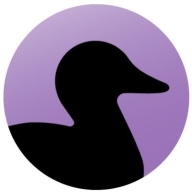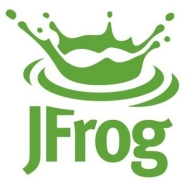

Black Duck SCA and JFrog Xray are competing software composition analysis tools with distinct advantages. Black Duck SCA has the upper hand due to better pricing and support satisfaction, although JFrog Xray's features make it an attractive option.
Features: Black Duck SCA excels in open source management, vulnerability scanning, and license compliance. Its component management, automated code scanning, and comprehensive reporting are also significant strengths. JFrog Xray offers deep recursive scanning, seamless integration with Artifactory, and robust impact analysis. It also stands out with its curated policies and rules for detecting vulnerabilities.
Room for Improvement: Black Duck SCA could improve its user interface and enhance its security vulnerabilities identification. Reporting capabilities could be more intuitive, and cloud support needs expansion. JFrog Xray could simplify its setup process and user interface. Improvements in customer support and extending integration beyond its ecosystem are potential areas for growth.
Ease of Deployment and Customer Service: Black Duck SCA offers flexible deployment and a broad support network, enhancing user experience. JFrog Xray depends on its integration with the JFrog ecosystem, which may complicate deployment but benefits DevOps processes.
Pricing and ROI: Black Duck SCA generally has lower upfront costs and emphasizes long-term value through compliance features. JFrog Xray may involve higher initial expenses due to its comprehensive integration suite but promises greater efficiency and ROI driven by automation.
If you're using it on critical external programs where there is regulatory compliance on ensuring that the source code is clean from open-source, there's substantial ROI.
There are some pain points with the response time and first-level support quality.
On a scale of 1 to 10, I would rate the technical support of JFrog Xray an eight because they are very knowledgeable.
When we need clarifications, we contact our account manager, and they arrange demos.
I would rate the scalability of Black Duck 8 or 9.
According to my use case, it is highly scalable.
I use JFrog Xray primarily for security purposes, and I find it reliable.
We did experience crashes, downtimes, and performance issues with JFrog Xray.
It can improve on the security side of it, specifically vulnerabilities identification.
There are areas for improvement such as false positives and the scanning of containers.
Black Duck does not have the SBOM management part.
When we have given a very long tag, it doesn't work as expected and requires excessive scrolling.
somehow you need to adapt your GitLab pipeline and turn them into JFrog pipeline, and this is something they don't really advertise at first—you're obliged to use the JFrog CLI.
X-ray needs improvement in supporting more than one database, as it currently only supports PostgreSQL.
JFrog Xray provides a free trial of 14 days.
The basic scanning capabilities come with Artifactory, however, curation requires additional licenses.
The most valuable feature of Black Duck is the composition analysis feature, which is effective for security risk management.
Black Duck's ability to identify dependencies very accurately has been most valuable in identifying and mitigating risks.
The software composition analysis is most effective for security risk management.
The policy-driven approach of JFrog Xray helped me maintain security standards by integrating it in the development pipeline.
The most valuable features of JFrog Xray are its curation capabilities, its native integration with Artifactory, scanning for vulnerabilities, and license compliance features.
With other registries such as ECR, we can use the images only in the AWS cloud. With JFrog, we can use this registry from any cloud or work locally as well.
| Product | Market Share (%) |
|---|---|
| Black Duck | 16.7% |
| JFrog Xray | 10.1% |
| Other | 73.2% |


| Company Size | Count |
|---|---|
| Small Business | 6 |
| Large Enterprise | 16 |
| Company Size | Count |
|---|---|
| Small Business | 1 |
| Midsize Enterprise | 3 |
| Large Enterprise | 6 |
Black Duck is an essential tool for software composition analysis and license compliance. It identifies vulnerabilities effectively and supports security management in DevOps environments, offering integration, performance stability, and community support.
Organizations rely on Black Duck for seamless integration in CI/CD pipelines, thorough scanning of source and binary codes, and management of operational risks associated with open-source and commercial licenses. It plays a crucial role in security risk management and delivers a robust policy management framework. Users value its ease of use and reliable community support while benefiting from its comprehensive dependency visualization capabilities. Despite its strengths, there is room for enhancement in integration with other tools, UI friendliness, and reporting features.
What are Black Duck's key features?
What should users look for in ROI?
Enterprise environments use Black Duck extensively for security, compliance, and risk management, ensuring software meets regulatory standards and mitigates vulnerabilities. Its implementation in specific industries aids in controlled and secure software development processes, underlining its role in maintaining rigorous security standards while delivering dependable performance.
JFrog is on a mission to enable continuous updates through Liquid Software, empowering developers to code high-quality applications that securely flow to end-users with zero downtime. The world’s top brands such as Amazon, Facebook, Google, Netflix, Uber, VMware, and Spotify are among the 4500 companies that already depend on JFrog to manage binaries for their mission-critical applications. JFrog is a privately-held, global company, and is a proud sponsor of the Cloud Native Computing Foundation [CNCF].
If you are a team player and you care and you play to WIN, we have just the job you're looking for.
As we say at JFrog: "Once You Leap Forward You Won't Go Back!"
We monitor all Software Composition Analysis (SCA) reviews to prevent fraudulent reviews and keep review quality high. We do not post reviews by company employees or direct competitors. We validate each review for authenticity via cross-reference with LinkedIn, and personal follow-up with the reviewer when necessary.